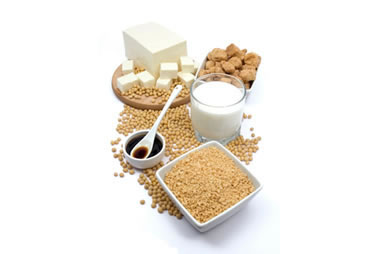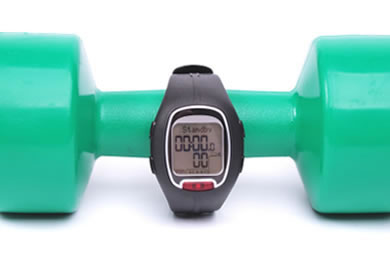By CD318156,
SparkPeople Blogger
1/29/2011
With much of the country experiencing unseasonably colder temperatures, as well as snow and ice this winter, these conditions can make it more of a challenge to hit the trails to get in your daily run in, especially when it would be so much easier to stay indoors. But you don't have to put your workouts on hold until the spring temperatures return. By taking proper precautions before heading outside you can make the most of your workouts while battling the elements.
Below are a few tips to help make your outdoor activities this winter a little more pleasurable. While I do focus on running know that these tips can be applied to almost every workout activity done outside during the cold winter season.
- Layering is a must
Layering allows you to remove articles of clothing as your body temperature begins to rise. Being overdressed at the onset of your run can lead to a greater sweat rate early on which can lead to chills especially if there is a brisk wind. Click the following link for ideas on how to layer for your winter runs.
- Put your clothes in the dryer before heading out
A little trick of the trade many runners use before heading out into the frigid winter temperatures is putting their running clothes in the dryer prior to their runs. While you may find yourself a little toasty at the onset of your run, by the time your body generates its own heat, the heat from your warm clothing will have dissipated.
- Wear mittens instead of gloves
Unlike gloves, wearing mittens allows your body's warmth to be shared. Another trick runners have been known to use is slipping in the hand warmer packets that hunters use to keep their hands warm. All you have to do is open the packet and slip these into your mittens and you are good to go. And because these packets can stay warm for hours, they are especially nice in keeping your hands warm when you are done with your run.
- Cover your face and your neck
There is an old wives tale that running in below freezing temperatures could cause your lungs to freeze. That cannot happen since our bodies are designed to warm the air via our nasal airway before it reaches our lungs. However, this doesn't mean running in colder temperatures doesn't present some challenges.
Wearing such attire as a balaclava and neck gaiter is the way to go for many cold weather exercise enthusiasts. A balaclava is basically a hooded mask that covers the neck and head allowing for an opening for your face. However, in extreme temperatures you can even go so far as pull it over your mouth and nose leaving a small opening for your eyes which provides for greater protection from the cold. Wearing a neck gaiter is similar to a balaclava although it is basically used to keep your neck warm, however it can be pulled up to cover your mouth and ears.
- Warm-up before heading outside
Warm-ups are important any time of year, but even more so in winter when pulled muscles can be a problem without an appropriate warm-up. Some runners find doing a nice 10 minute warm-up before heading outside can make the transition to running easier once you venture into the cold.
- Begin your run into the wind
If possible choose a route that begins your run into the wind so that on your return you have the wind at your back. Ending your run into the wind, especially when your body has been sweating, can increase your chill factor and in very frigid temperatures this could increase your risk for developing hypothermia.
- Make a loop
By running in a loop, versus an out and back route, this allows you to shorten your run if you need to if weather conditions become too treacherous to continue running.
- Slow your pace
Because of the added bulk from the extra layers of clothing your body will experience greater resistance, couple that with running on snow/ice on the road surface and you will have no choice but to slow your pace.
- Wear the proper footgear for snow/ice
YakTrax are simple lightweight steel coil and rubber attachments which mold to your existing shoes allowing for greater traction, especially for those who must run or walk on snow or ice.
- Hydration
Hydration is just as important in winter as it is in summer. Remember your body loses fluids via sweating, respiration and production of urine so be sure to hydrate before, during and after your workouts. A little trick of the trade is to keep your water bottle under your clothing to help keep the water from freezing.
- Skin protection
Sunscreen and sunglasses are staples for summer and winter workouts alike, especially on sunny days. Sunlight reflection from the snow and the road surface can lead to glare and even sunburn.
And don't forget to apply lip balm to your lips before heading out and petroleum jelly to exposed skin. It isn't uncommon for volunteers to offer tongue depressors loaded with petroleum jelly during winter marathons and half-marathons to help offset chaffing from the wind and cold.
- Don't forget the anti-chaffing cream
Because of multiple layering of clothing this can lead to a greater risk of sweating which in turn can lead to a greater chance of developing chaffing issues, especially in the arm area, and for women along the bottom their sports bra line. Products such as Mission Skincare's Long-Lasting Anti-Chafe Balm and High Performance Anti-Friction Cream are ideal for helping prevent this common annoyance.
- Wear your reflective gear
You want to make sure drivers see you so make sure you follow the road safety tips and that you wear your reflective gear, especially if the skies are overcast. These are just a few simple tips to help make your winter time workouts a little easier, but if weather conditions warrant, it's just fine to use these days to run inside on the treadmill or do some cross training until the temperatures warm up.
Have you continued your outdoor exercise routine during the winter months? What tips can you offer others to make working out in the cold more enjoyable? Do you have a temperature cut off that you will not go outside to run or walk?
|
|









.jpg)











